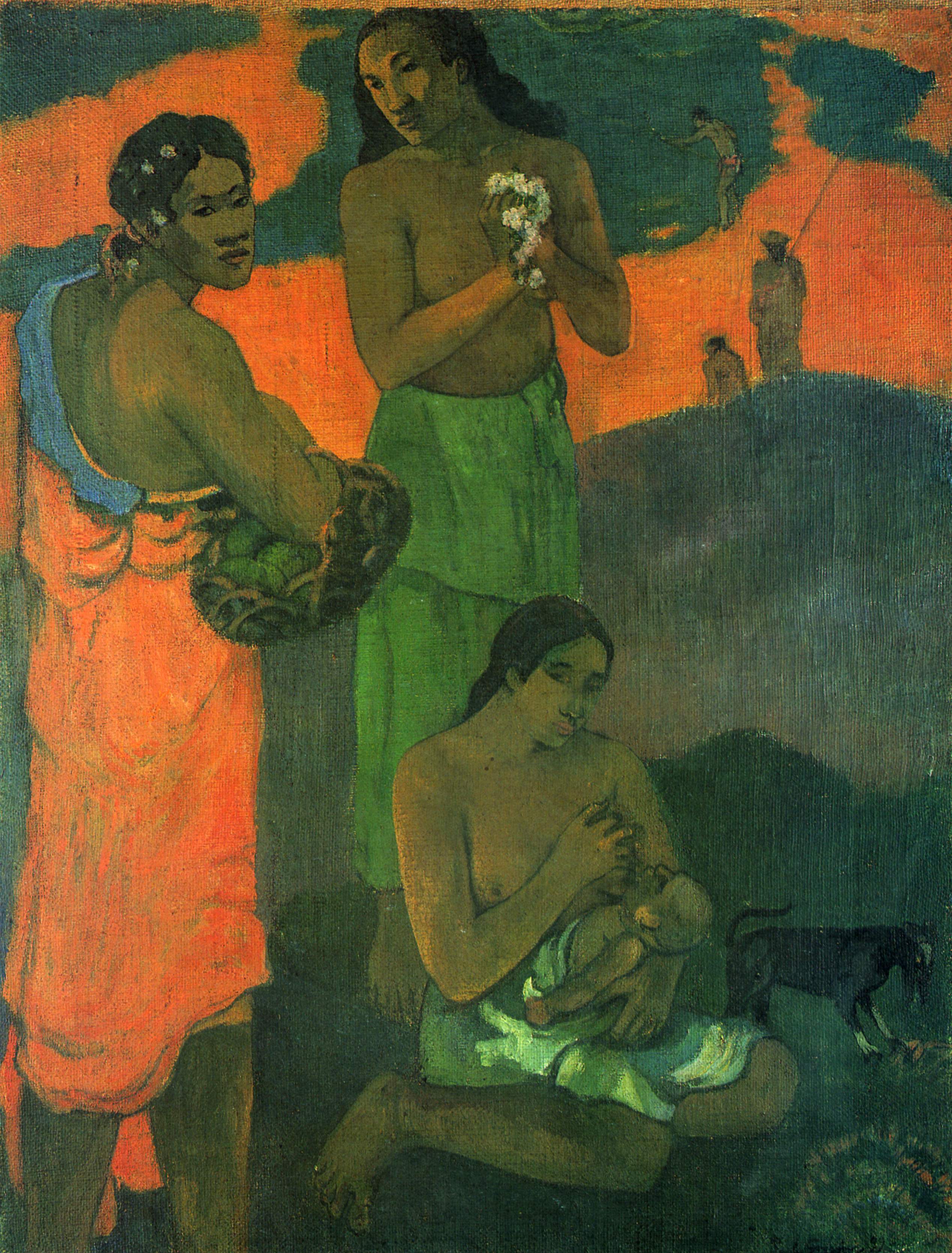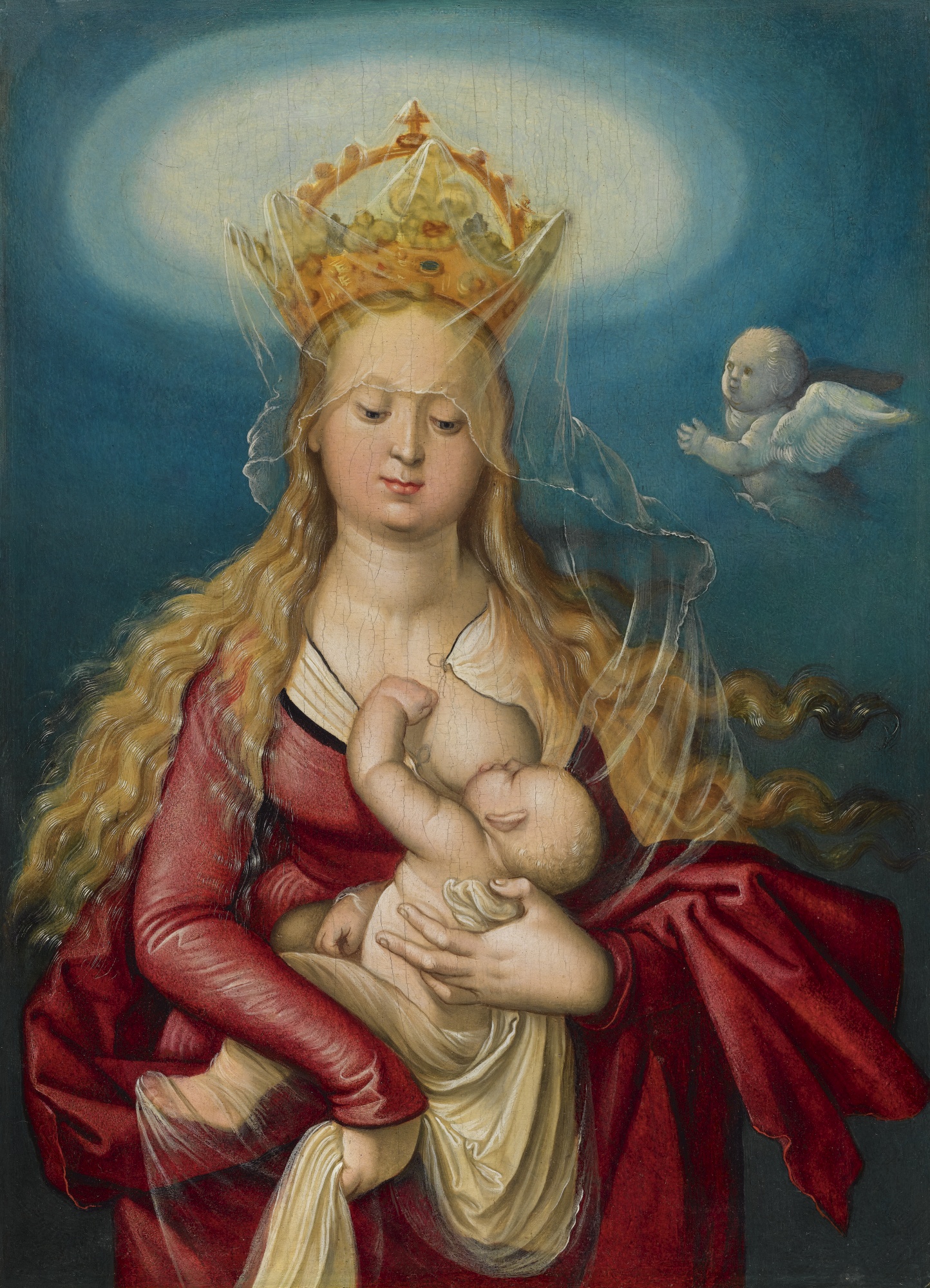
Until a few months ago I’d not given much thought to breastfeeding. Yet that changed during my wife’s pregnancy, as I dipped into books about babies (some serious, others frivolous).
I’d previously had a dim awareness that breastfeeding stimulates the mother’s production of oxytocin, but I’d also tended to muddle up the so-called “love hormone” with the widely abused opioid OxyContin. Now this kind of confusion ceased to be droll and, raising my game, I took a tour of the relevant literature, including pro-breastfeeding polemics by the likes of Ina May Gaskin.
“Even as our daughter’s birth approached, the terms and paraphernalia remained largely mysterious because, to be blunt, I’d spent very little of my life looking at babies”
Antenatal classes emphasized the importance of supporting my wife’s efforts to nurse—or perhaps, more accurately speaking, the importance of supporting her efforts to get support. But even as our daughter’s birth approached, the terms and paraphernalia remained largely mysterious because, to be blunt, I’d spent very little of my life looking at babies, at the maternal functionality of breasts, or at the relationship between them. Suddenly there were new words and concepts to master: the baby’s “latch”, the let-down reflex, foremilk and hindmilk, breast-pumps and their flanges, nursing bras and tongue-tie.

My rapid education in the subject has prompted me to look more closely at how it tends to be depicted. I’ve returned to classic images of breastfeeding: Gauguin’s strong Polynesian women, Cézanne’s painting of his wife Hortense cradling their tiny red-cheeked blur of a son and Picasso’s neoclassical Maternity, with its hint that the baby is squirming beneath its muslin canopy. Picasso, of course, repeatedly portrayed motherhood, but what I’m touched by in this interpretation—from 1905, when the artist was in his early twenties—is its melancholy. The mother, though hardly dishevelled, has the air of someone weighed down by the thought that she is a shell of her former self.
Among other works on this theme, two that have struck me are Max Beckmann’s Motherhood and Meijer de Haan’s Maternity. In Beckmann’s painting the baby’s chunky red legs point straight up and the mother maintains a firm focus that looks to me like an affront to the inevitability of fatigue; there’s a troubling sense that despite the mother’s strength and intentness the unwieldy baby may work its way free from her hold. De Haan’s painting shows his lover Marie Henry, the owner of a hotel where he lodged for some time with Gauguin; the child is the fruit of their ill-starred liaison, and as the businesslike, plum-headed infant clamps on her, she appears lost somewhere between pride and sadness.

I’ve also come across pieces by artists I’ve barely registered before. One of these is Charles Frederic Ulrich’s In the Land of Promise, Castle Garden, a rare nineteenth-century painting of emigrant families arriving in America: in the foreground sits a woman who’s weary, unimpressed by the Eden in which she finds herself, and a bonneted baby suckles her left breast, its expression a little guilty. (I know that look: innocence writ one size too large.) Ulrich’s canvas dates from 1884, a time when—astonishingly to a twenty-first-century audience—America’s public discourse around breastfeeding often identified it with the poor and with foreigners, for whom the act was supposedly a means of perpetuating alien traits rather than adopting American culture and habits.
In the Land of Promise, Castle Garden is calculated to make us think of Mary and Jesus, themselves refugees (in flight from King Herod). Ulrich nods to a tradition of formal images of the nursing Madonna and child. Medieval Christians attached special significance to Mary’s milk, which they associated with the nurturing qualities of the Church and also with the blood of Christ—with grace and humility, the transfer of knowledge, Jesus’s humanity and the spiritual sustenance provided by faith. That iconography endured and is evident in frequently reproduced images by artists such as El Greco, Hans Memling, Rogier van der Weyden and Lucas Cranach the Elder. In many cases Mary’s gaze is averted from the act; Christ looks hungry, albeit a touch furtive, and the breast, though clearly a source of comfort, is of modest dimensions, with a nipple more like a pine nut than a mushroom. In El Greco’s 1585 painting of the Holy Family, on view at New York’s Met, the infant Jesus addresses the nipple with a look that’s at once nervous and ponderously middle-aged; the angular composition suggests tension. In striking contrast, Leonardo da Vinci chooses in his Madonna Litta (c. 1490) to depict the nursing Mary as a proud figure, and her dress—a forerunner of modern maternity wear—features a useful slit to afford easy access to the breasts.

A popular variant of the familiar twosome shows St Bernard of Clairvaux praying before an image of the Madonna and being sprayed with her milk. One of the best-known versions of this is Alonso Cano’s from around 1660, which hangs in the Prado in Madrid. The moment it pinpoints, known as Bernard’s “lactation”, is startlingly awkward. Yet it impressed contemporaries who favoured a highly physical style of worship, and it still has a powerful appeal for anyone who has craved a direct personal experience of the holy mystery. Also in the Prado and altogether more unusual is Pedro Machuca’s The Virgin and the Souls in Purgatory (from 1517, and the only signed work by this one-time pupil of Michelangelo). This shows Mary assuaging the pains of the damned with drizzlings of her milk; she has control of her right breast, while Christ manipulates the other, his left thumb probing the flesh with alarming vigour.
Every work I have mentioned up to this point is by a man. Against this background, it’s interesting to encounter the oeuvre of Mary Cassatt. The American face of French impressionism, Cassatt was a documentarist of relationships between mothers and children. Sensitive without being sentimental, she liked to depict breastfeeding. One of her most tender pieces is Young Mother Nursing Her Child (1906), which hangs in the Art Institute of Chicago: there’s full eye contact between the mother and her infant, who cups her chin with a starfish hand. The positions of mother and child—especially the mother’s hand catching her baby’s stray foot—are beautifully observed.

Cassatt celebrates the intimate nature of breastfeeding. But to write those apparently innocent words is to move into contentious territory. Breastfeeding is a political subject. Arguments rage, especially online, about all aspects of it. The language used of it in everyday conversation is as fiercely negotiated as the ways it’s represented in popular culture, the media and art.
“Breastfeeding is a political subject. Arguments rage, especially online, about all aspects of it”
Some commentators object to the adjective “intimate” being used in this context; for the baby, a mother’s let-down is a meal, and breastfeeding, so the argument goes, is the servicing of a need, not an act to be aestheticized. Accordingly, if someone other than the breastfeeding mother and child pays explicit attention to it, the mother is likely to feel self-conscious and the success of her nursing is put at risk.
There’s a counter-argument that proudly representing breastfeeding as “nutritive coitus” is exactly what is needed to stop shame and anxiety encroaching on the act. And while Mary Cassatt doesn’t eroticize it to a degree that justifies the term “coitus”, her paintings corroborate this view, celebrating the unabashed blissfulness of the mother and feeding baby’s sensual rapport.

My own (mild) objection to the “breastfeeding is intimate” trope is that it’s simplistic. My piecemeal reading on the subject didn’t fully prepare me for the elaborate reality. To watch my daughter Athena on my wife Tess’s breast is to grasp, as I’ve never before recognized, that breastfeeding has different phases and moods: there’s the hungry suck, which is what I’ve always rather casually pictured as the default setting, and there’s the gentle rhythmic suck during which Athena’s face assumes an expression of pacific contentment, but there’s also the fidgety nibble when she seems for a moment to have forgotten how to latch, the chill-out during which Athena wants to be off the breast yet have it just within reach, the disengaged doze in which a breast serves as a convenient pillow, and the spasm of impatience when she headbutts the breast and, to quote Tess, looks like a demented tortoise.
What the art doesn’t show—and, I appreciate, can’t—is how long all of this takes. A baby’s session on the breast isn’t fast food; it’s a home-cooked meal, and a slow-cooked one at that. But some representations do offer clues about this. Dürer’s student Hans Baldung Grien, noted for his images of the Madonna, was also a master of painterly innuendo, and when he depicts breastfeeding it’s with a subversive sense of its different modes and tones: there are traces of the lassitude and boredom that accompany the far more widely celebrated moments of wondrous reciprocity. This sixteenth-century German, one of the most under-esteemed painters I can think of, is an expert at rendering the power of the female body. The results can be lascivious, sinister or enigmatic, but they’re rich in psychological truth.




